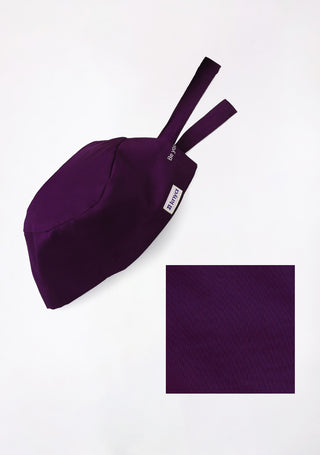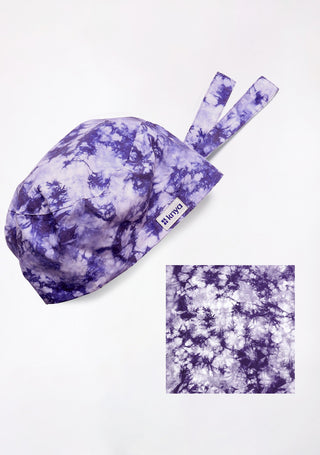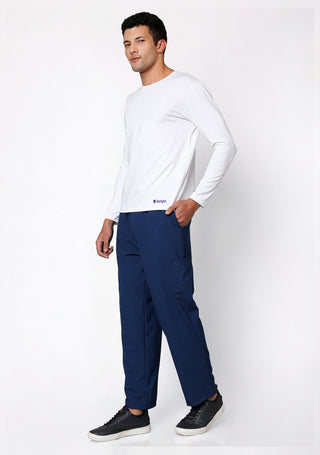Skin, the body's largest organ, serves as a protective barrier against the external environment. It is divided into various types, primarily categorized as thick or thin skin, based on structural differences. Thick skin, with its robust structure, is specially adapted to withstand mechanical stress and protect against physical damage, while thin skin, with its higher sensitivity and flexibility, plays a crucial role in sensory perception and temperature regulation.
Difference Between Thick Skin and Thin Skin
Below is the difference between Thick skin and Thin skin in the tabular format:
|
Feature |
Thick Skin |
Thin Skin |
|
Location |
Palms and soles |
Rest of the body |
|
Sensory Perception |
Lower density of sensory receptors; less sensitive |
Higher density of sensory receptors; more sensitive |
|
Hair Follicles |
Absent |
Present |
|
Sebaceous Glands |
Absent |
Present |
|
Epidermal Thickness |
Thicker epidermis with prominent stratum corneum |
Thinner epidermis and stratum corneum |
|
Stratum Lucidum |
Present |
Often absent or very thin |
|
Sweat Glands |
Predominantly eccrine sweat glands |
Both eccrine and apocrine sweat glands |
|
Dermal Papillae |
Pronounced |
Less pronounced |
|
Wound Healing |
More resistant to abrasions but slower to heal |
Heals faster but more prone to superficial cuts |
|
Aging |
Develops deeper lines and creases due to friction |
More prone to wrinkles and fine lines due to lower collagen density and moisture retention |
Browse best Scrubs Collection
Thick Skin : an overview
Thick skin is a specialized type of skin found in specific areas of the human body, primarily the palms of the hands and the soles of the feet. Its unique structure and functions are tailored to withstand high levels of abrasion and mechanical stress.
Features
Anatomical Features
-
Location and Distribution: Thick skin is primarily found in areas subject to a significant amount of abrasion and friction, such as the palms of the hands and the soles of the feet.
-
Epidermal THickness: Thick skin has a much thicker epidermis, primarily due to an increased thickness of the stratum corneum, the outermost sublayer of the epidermis. This thickened stratum corneum in thick skin is crucial for protecting against mechanical damage.
- Dermal Structure : The dermal papillae (projections of the dermis into the epidermis) are more pronounced in thick skin, creating a firmer bond between the dermis and epidermis.
Functional Features
-
Protection Against Mechanical Stress:Thick skin is specially adapted to protect against mechanical stress. The thickened stratum corneum, composed of densely packed keratinized cells, provides a robust barrier that resists tearing and abrasion. This adaptation is essential for the palms and soles, which endure significant wear and tear.
-
Enhanced Grip and Tactile Sensitivity:Thick skin is characterized by pronounced epidermal ridges, also known as friction ridges, which form fingerprints and footprints. These ridges enhance grip and tactile sensitivity, allowing for better manipulation of objects and providing sensory feedback crucial for fine motor skills.
-
Lack of Hair and Sebaceous Glands :Unlike thin skin, thick skin lacks hair follicles and sebaceous (oil) glands. The absence of these structures reduces the risk of clogging and infections in areas subject to heavy use and friction. However, thick skin contains a high density of sweat glands, particularly eccrine sweat glands, which help regulate temperature and provide moisture to the skin surface.
Clinical significance
-
Wound Healing:The powerful nature of thick skin means it is more resistant to superficial abrasions. However, when deep wounds do occur, they may take longer to heal due to the dense structure of the skin.
-
Skin Conditions :Certain skin conditions manifest uniquely in thick skin. Psoriasis, for example, often affects the palms and soles, leading to the development of thick, scaly patches. Plantar warts, caused by human papillomavirus (HPV) infection, also commonly occur on the soles of the feet, taking advantage of the thick, keratinized environment
Thin Skin : an overview
Thin skin is the most prevalent type of skin covering the human body, found in areas requiring flexibility and sensitivity. Unlike thick skin, which is confined to specific regions like the palms and soles, thin skin envelops most of the body's surface
Features
Anatomical Features
-
Epidermal Thickness:Thin skin is characterized by a significantly thinner epidermis compared to thick skin. It comprises the same five layers: the stratum basale, stratum spinosum, stratum granulosum, stratum lucidum (often absent or very thin in most areas), and stratum corneum. The stratum corneum in thin skin is much less dense, contributing to its delicate texture.
-
Stratum Lucidum:In thin skin, the stratum lucidum is typically absent or not well-defined, except in specific areas. This difference is one of the key distinctions between thin and thick skin, as the stratum lucidum provides an additional protective layer that is less necessary in areas covered by thin skin.
-
Dermal Papillae:The dermal papillae in thin skin are less pronounced compared to those in thick skin. These small projections into the epidermis provide a moderate level of structural integrity and support, allowing for greater flexibility and movement, which is essential for the diverse functions of thin skin across various parts of the body.
Functional Features
-
Sensory Perception:Thin skin is highly sensitive to touch, temperature, and pain due to its higher density of sensory receptors. This increased sensitivity is particularly important in areas like the face and fingertips, where detecting subtle changes in the environment is crucial for protection and interaction.
-
Presence of Hair and Sebaceous Glands:Thin skin contains hair follicles and sebaceous (oil) glands, which are absent in thick skin. The hair follicles aid in sensory functions and provide some degree of protection, while sebaceous glands produce sebum, an oily substance that keeps the skin hydrated and offers a barrier against bacteria and fungi.
-
Sweat Glands:Both eccrine and apocrine sweat glands are present in thin skin. Eccrine glands are involved in thermoregulation by secreting a watery sweat, while apocrine glands, concentrated in areas like the armpits and groin, secrete a thicker, milky sweat that can lead to body odor when broken down by skin bacteria.
Clinical Significance
-
Wound Healing:Thin skin, while more prone to superficial cuts and abrasions due to its delicate nature, generally heals faster than thick skin. Its rich vascular supply and thinner epidermal layer facilitate quicker repair and regeneration processes.
-
Skin Conditions:Thin skin is susceptible to various skin conditions, such as eczema and dermatitis, which often manifest as inflammation, redness, and itching. The higher density of sebaceous glands also makes thin skin more prone to acne and other oil-related skin issues.
-
Aging:Thin skin tends to show signs of aging more prominently than thick skin. It is more prone to developing wrinkles and fine lines due to its lower collagen density and reduced ability to retain moisture. Sun-exposed areas of thin skin, such as the face and neck, are particularly vulnerable to photoaging, resulting in age spots and a loss of elasticity.
Shop the Best Lab Coats from Here!
Key Functional Differences Between Thick and Thin Skin
-
Thick Skin: Found on palms and soles, less sensitive, lacks hair follicles and sebaceous glands, has a thicker epidermis and stratum corneum, predominantly contains eccrine sweat glands, and is more abrasion-resistant but slower to heal.
- Thin Skin: Covers the rest of the body, more sensitive, contains hair follicles and sebaceous glands, has a thinner epidermis, includes both eccrine and apocrine sweat glands, and heals faster but is more prone to superficial cuts.













